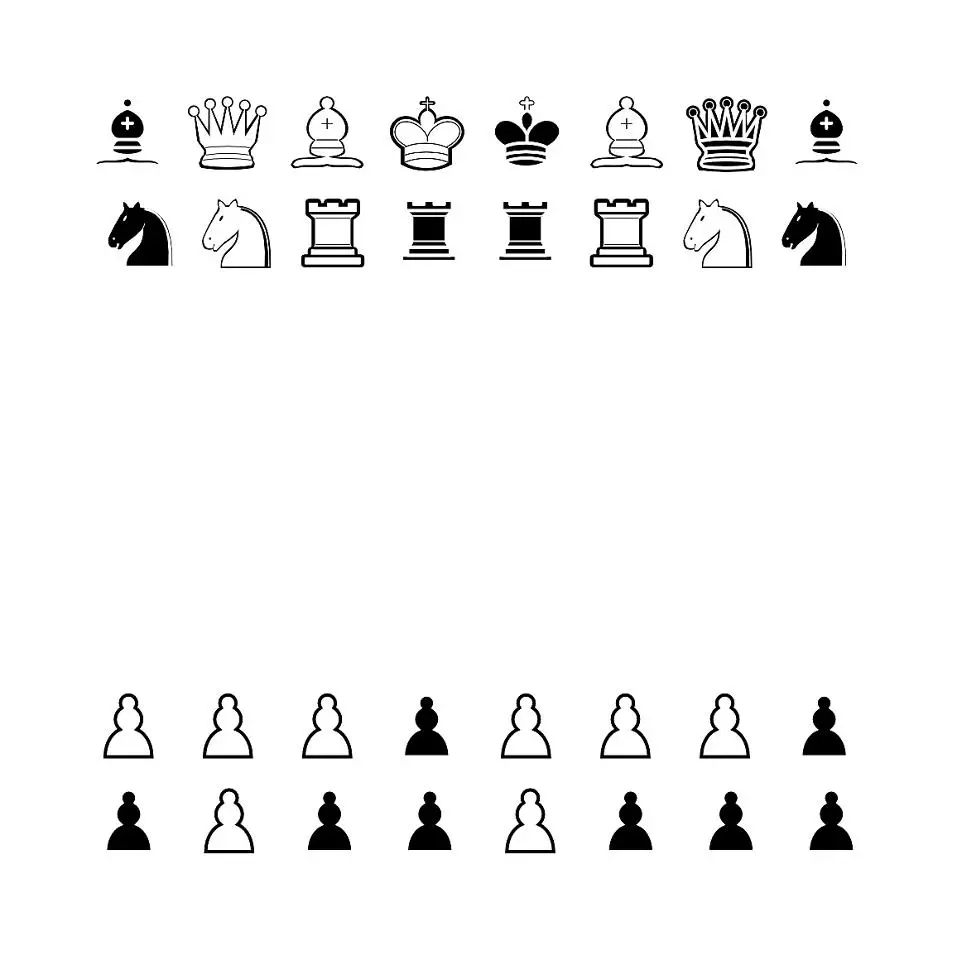Found this video interesting and wonder if there are any alternatives within Linux systems
Brendan Howell’s The Screenless Office is “a system for working with media and networks without using a pixel-based display. It is an artistic operating system.”
You can “read and navigate news, web sites and social media entirely with the use of various printers for output and a barcode scanner for input”.
“the ship was completely black. There were black controls labelled in black, on a black background, with a little light that lit up black, which made it difficult to control the ship. The ceiling and walls of the swaying cabin were also black, as well as the seats, control panel, the instruments and the little screws that held them in place. The thin tufted nylon floor covering was black, and when a corner of the foam underlay was lifted up that was also discovered to be was black.”
Or
“For years radios had been operated by means of pressing buttons and turning dials; then as the technology became more sophisticated the controls were made touch-sensitive - you merely had to brush the panels with your fingers; now all you had to do was wave your hand in the general direction of the components and hope.”
Thank you Douglas Adams
That’s funny you share this, a friend just sent it to me yesterday.
Similar to this: https://github.com/alibahmanyar/breaklist
This is an interesting way to receive data but I wish there was a way to do the reserve. Take handwritten/handled input into a computer. I asked this question the other day if I could somehow input my handwritten notes into programs like Trilium (or logseq whatever) and memos. OCR/HCR seems to far behind still so I am unsure. That would certainly be a cool method!
I asked this question the other day if I could somehow input my handwritten notes into programs like Trilium (or logseq whatever) and memos. OCR/HCR seems to far behind still so I am unsure.
I just left this comment on your post.
thanks for linking me to that comment!
Similar to this: https://github.com/alibahmanyar/breaklist
Relatedly, there was a company was selling a cloud(🤡)-based product called “Little Printer” from 2012 to 2014; after their backend predictably shut down, some fans of it recreated it as https://tinyprinter.club/ and later https://nordprojects.co/projects/littleprinters/
somehow input my handwritten notes
I’ve heard the reMarkable e-ink tablet’s cloud service has good-enough-to-be-usable handwriting recognition, but sadly I haven’t heard of anything free/libre and/or offline that is.
Relatedly, there was a company was selling a cloud(🤡)-based product called “Little Printer” from 2012 to 2014; after their backend predictably shut down, some fans of it recreated it as https://tinyprinter.club/ and later https://nordprojects.co/projects/littleprinters/
This is super cute. Thanks for sharing!
I’ve heard the reMarkable e-ink tablet’s cloud service has good-enough-to-be-usable handwriting recognition, but sadly I haven’t heard of anything free/libre and/or offline that is.
I’ve eyed those for some time but I do prefer FOSS or at least only connected to my own server… That is a cool suggestion!
not so “funny” when you consider that the 3rd episode is released 2 days ago
What?? The link Arthur sent is not in that third video. What does your comment even mean?
who is Arthur?
@cypherpunks@lemmy.ml who I responded to. What do you seek to add?
nothing. excuse me
Whatever the UI in Jurassic Park is was a genuine linux interface at some point so maybe that
That was IRIX (SGI’s UNIX) with the “fsn” file browser, if the Internet is to be believed.
My 8th grade English teacher made a big deal of reading that book which includes a lot more programming than the movie. I don’t remember the point he wanted to make though…
Watched the first video. Interesting.
Reminds me of when I realized some twenty years ago that hierarchical filesystems are just a convention and I was daydreaming about a dynamic database-like filesystem where files are stored with meta data in tags that could be addressed according to whatever your chain of association may be. I even conceptual a bridge of how common OS like Windows or Linux could connect and interface such a file system using the familiar system of slashes transparently for the user with all the benefits and none of additional complicated learning. Of course this was way beyond any technical scope of mine and I didn’t bring it to attention beyond nerdy beer conversation.
Maybe I was on to something.
You can do tag-based file management on Linux. Linux filesystems support “extended attributes” or “xattr”. There is some software out there that uses xattr for tagging. I don’t know what the best options are right now for tag-based file management, but I think it exists.
Looking at what’s out there I see there are also apps that each use their own out-of-band tagging schemes. There’s a CLI, tmsu, and a GUI, TagSpaces. I don’t think these interoperate with each other’s tags.
Of course those supplement instead of replacing hierarchical organization.
The talk of hypertext and “escaping paper” makes me think of Obsidian which embraces hyperlinking, tags, and mind mapping via its canvas feature.
Now that you’ve mentioned Obisian I realised that systems like it are quite different from how most things work. I use it myself and really like it, however it also takes quite some effort to get the best out of it. You have to actively create useful links between things and think about different ways you would want to access the content to be able to actually find it when you need it. For example you need to create aliases for elements if they are known by a different name in another context.
When I first started using Obsidian, I used folders too much because I felt like things were “messy” if not tidied away. I already knew that one of the weaknesses of hierarchical folder systems is how it can make having an overview of the system harder, but it took a while for me to properly understand that.
As you say, it’s necessary to be proactive with making links to things. I found that when I used Obsidian for journalling, I started to put square brackets around loads of stuff, because the inactive links didn’t do me any harm, but they did highlight what might be useful as active pages. Something I picked up from the Zettelkasten crowd was occasionally having a “Map of Content” page, where I used it as an index of topical links. It always worked best when I allowed them to arise naturally, as needed. Once I got the trick of this, I found I was able to find things far more easily, because I was able to navigate via the links.
Tags are a tricky one to use. I never found them useful as a primary organisation method — they were worse than both hierarchical folders and link based organising in that respect. They were super useful as an augmentation to my organisation though, especially when I used them sparingly.
This is all an overlong way of saying that yes, I agree with you, using systems like Obsidian do require a switch in how you think in order to best use them. Something that I always enjoy pondering is whether pushing ourselves out of our comfort zone is something that’s inherently good — something something cognitive flexibility? I don’t know, but I enjoy endeavours of this sort nonetheless
Oh, how interesting. Yeah, I did some very basic prototyping with a WebDAW (online storage technology that was popular by the time), but I was mostly interested in the concept that the actual execution of it. And I didn’t have massive amounts of data in numerous files so no practical motivation either.
Interesting! I will have to check those out. It also made me think of Obsidian and Trilium mindmapping. Very useful. Wonder if this could apply to file structures?
The BeOS file system actually had such functionality: https://arstechnica.com/information-technology/2018/07/the-beos-filesystem/
If you’re a fan of that principle, then consider checking out Logseq.
It’s main workflow is that you use the Journal page and write down everything that’s on your mind, may it be projects, research, social stuff, or whatever.
And while writing, you link that stuff with other stuff, and in the end, even when forgetting the exact search cues, you can go hunting for words mentally, and always find what you wrote months ago.
Obsidian, the competitor of it, is also great, but more similar to traditional note taking software, and therefore more hierarchical.
Logseq is FOSS too btw!
Object stores like s3 and ceph exist right now. They’re just not very useful for simple file management. For other models, like tags, they’re great.
Thanks for watching what I shared and sharing own thoughts :)
Your idea makes me think of my vague understanding of plan9.
Check this out: https://en.wikipedia.org/wiki/Plan_9_from_Bell_Labs#Union_directories_and_namespaces
Do you imagine something like a mind map from obsidian where things are linked or unlinked by tags?
It’s pretty distant now, but I did imagine it from a user perspective to be something like a folder structure except you can “tag along” as you go, so that you can find the files from your subjective chain of association rather than remembering how the project is set up. Say to reach the file;
- /project/year/keyword 1/keyword 2/file
- /keyword 2/year/project/keyword 3/file
Consequently, you could have all relevant files collected or filtered depending on how you set up your paths like searching a database rather than keep track of different data structures of different department needs and such.
So you could call it a mind map of sorts.
My entry level experiments were with just “tags” (the keywords) but I imagined a file system that would incorporate everything filesystem like permissions, creation/modification dates, and next gen like file history, integration with custom content parsing and version control systems and stuff that are partially reality today with COW filesystems.
I think familiarity is a big part of why things catch on. If something is too different to what people know there will be only a few people who want spend their time learning it. And it would have to be revolutionary for these people to be able to convince others to also learn it.
It would have been helpful if in the video they would have discussed how an alternative could have even looked like and why it would be better. This is a demo of Project Xanadu, the system Ted Nelson envisions where he shows how it could work. He seems to propose that it would be hyper interconnected for every user of the system and every piece of media in it (another interview where he describes it). I’m not sure something like this could reliably work at a scale similar to the internet (he claims his system could have been the internet had they delivered it earlier) and also I’m not sure how it would work for what people actually want to do with the internet in addition to reading documents. Companies also want a certain control over the work they publish so I don’t think they would like a system that connects their work to everything else. And you also have to keep in mind that there are people who want to actively do bad things so I am not sure how a hyper interconnected system could protect its users from bad actors.
Edit: Found another video where he describes and shows a version of how a document with paid content works. It looks interesting but I’m still not sure how this would work on the scale of the internet and if it would even be better than how things work right now.
Thanks for the links! Odd he included that video but didn’t include the points you/he made beyond the criticism.
Edit: Watching the video you linked that is included in the posted video, not sure how big a deal Xanadu is. I wonder how this would compare to git history and tag maps such as Obsidian.
First video has a nice edited summary of the history of guis.
But if the author had anything to say about guis other than it could be different, he would have said it. -Or at least suggested it to keep interest. The next video is a summary of every YouTube short he’s watched on philosophy and physics.
It’s not relevant to Linux at all.
It’s relevant to linux in I think the average linux user is more open to consider alternative interfaces than a windows user.
Video is more than just a history, I thought it was eye opening for considering what could be an alternative. I also don’t know but find the question interesting.
It would be interesting if he actually presented an alternative instead of 45 minutes (3 videos so far) of, “What if there was an alternative?”
The video doesn’t even talk about Linux. It’s Xerox Parc, Ted Nelson, Apple Macintosh, and Windows.
That would certainly be more interesting. Sorry you don’t find it relevant…
It’s fine. Your post has started an actual discussion of alternative UI’s that’s far more informative than the video.
:)
I don’t really have time to watch the video rn, so I’m not sure whether my reply really hits the mark, but what about window managers? you know, like sway and stuff.
Thanks for sharing
Is the main difference that it tiles instead of floats?
Edit: oh it seems much more hotkey, terminal, and search focused watching than clicking. I think that is a much bigger difference than I originally expected.
Yes, though traditional point-and-click GUI apps will also be rendered according to the same rules.
However, a lot of fans of tiling window managers also use things like terminal-based file mangers, have relatively well developed Neovim configs, etc.
So, it’s kind a whole THING that some folks really enjoy.
I’ll read more into it then. Thanks for adding!
I haven’t used that so you’ve given me something to read about :) I’m not sure I fully get it
Highly recommend the video when you have time. I found its point really engaging
There is arcan, I have never tried it, though. https://arcan-fe.com/about/
Is this something like what NeXTStep was for Postscript but for Lua?
I went right past the link but now that you mention nextstep im going to check it out. loved the next hosts but openstep did not thrill me and even osx seemed not as nice.
Lemmy’s text-oriented, i’m not gonna bother with a video… on youtube of all places.
</rant>.That’s why the all feed has so many images, right? why comment then? (softened my tone)









